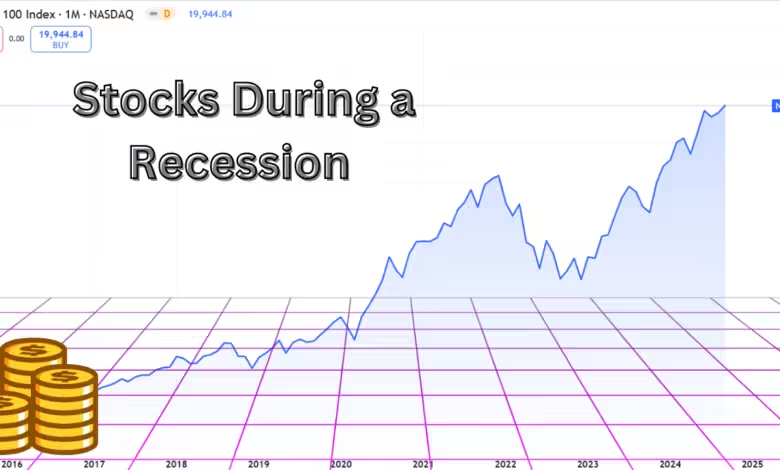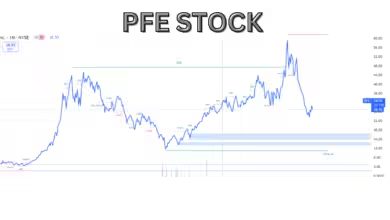What Happens to Stocks During a Recession?

What Happens to Stocks During a Recession? A recession is the period of economic decline which may at times reflect on all sectors of the economy, the stock market inclusive. For investors, it might be very essential to understand how stocks behave during a recession since they have to handle those challenges that come with it. Historically, recessions have often led to sharp downturns in stock prices, but the impact may vary according to one type of stock to another, market sector, and overall economic outlook.
Understanding a Recession
The economy primarily goes into recession when there are two successive quarters of declining GDP. These slowing-down economic activities mainly represent reduced consumer consumption, decreased business investments, and increased levels of unemployment. If such a scenario is faced, consumers and businesses start to curb their spending, while decreased economic activity often represents decreased corporate profits—something that affects stocks prices directly.
Stock Market Reaction to a Recession
1. Stock Prices Drop Significantly
Fear often drives the market at the beginning of a recession. So, investors try to liquidate their stocks to minimize their losses, and the price of stocks goes crashing. This is especially so with more sensitive stocks, such as technology or luxury goods. Investors panic and run for safer havens like bonds, gold, or cash and initiate the now-familiar phenomenon of the “flight to safety.”
2. Volatility Increases
Generally, stock market volatility increases during a recession. Economic uncertainty breeds a more reactive approach to news and economic data from investors, creating big daily swings in stock prices. This simply adds to the unpredictability of the market, which usually causes lesser-experienced investors to panic.
How Different Sectors Perform During a Recession
Not all stocks react equally well to a recession. Certain sectors tend to perform better than others due to their businesses’ nature.
1. Defensive Stocks
These are businesses selling essential goods and services. If one goes through utilities, healthcare, or consumer staples, people do not stop paying electricity bills, buy groceries, nor will they let medical problems wait. Therefore, when going into a recession, such companies stand a good change of stabilizing. Defensive stocks have also proven to provide minimal mark-to-market decline, thus offering useful leverage in investment planning to stabilize otherwise volatile portfolio during a down period.
2. Cyclical Stocks
Highly volatile to the business cycle, the category of cyclical stocks truly mirrors sectors like automotive, travel, and luxury, where revenues plummet drastically in a recession. People curtail discretionary spending, which definitely hurts these industries. Therefore, cyclical stocks bear the brunt in an economic downturn.
3. Growth vs. Value Stocks
Growth stocks of which the largest declines occur are those belonging to technology or innovation, among the biggest decliners. The prime reason for this sort of decline is because such companies derive much support from future profits. When the economy contracts, the growth of such companies might be restricted.
Value stocks, for example, are companies that have been more established with possibly better balance sheets. As much as they might be experiencing declines in their stock prices, value stocks are usually considered more appealing in a recession because they tend to be stable and fall into a lower price-to-earnings ratio.
Investor Behavior During a Recession
1. Panic Selling
Panic selling would probably be the most common reaction to a recession: once stock prices begin to fall, panic unfolds, and people start selling their shares out of fear of cutting further losses at higher prices. In turn, this reinforces the downward spiral in the market with even sharper and faster declines. In the context of a long-term investor, panic selling is one of the worst options as losses are consolidated instead of waiting for a recovery.
2. Buying Opportunities
While most investors run for cover during a recession, some perceive it as a buying opportunity. Recessions always drag down the general stock prices. Therefore, the period becomes an opportune time to pick quality stocks at the reduced prices. Reputed investors like Warren Buffet have famously utilized the periods of recessions by investing in undervalued shares and then later enjoyed their reversal.
Stock Market Recovery Post-Recession
Repeated history has shown that, while recessions are painful to the stock market in the short run, markets will eventually recover. During the 2008 financial crisis, for example, stocks went into one of the longest bull runs in history. The secret is to be patient on the part of investors. While recovery might take months or years for the stock prices to fully recover, individuals who do not give up often collect good returns in the long haul.
Strategies for Investing During a Recession
1. Diversify Your Portfolio
Diversification is one of the best strategies to safeguard your portfolio during a recession. In such cases, investing in a diversified asset class—the stock market, bonds, commodities, and real estate—reduces the general danger. Another advantage is that you can successfully ride out some industries in a state of recession due to diversified investments in various areas.
2. Focus on Dividend Stocks
One strategy is to invest only in dividend stocks. Dividend stocks are those whose yields have adjusted with time according to the market. Thus, diversifying investments across different sectors helps you ride out the general recessionary threat.
Dividend paying stocks can be an excellent source of a steady stream of income in the face of recession. Companies with consistent dividend payouts demonstrate financial stability signs and thus provide a safe haven if stock prices get volatile. For some investors, even dividend stocks perform better than growth stocks during an economic slowdown.
3. Dollar-Cost Averaging
Dollar-cost averaging is also another strategy where you invest a fixed amount of money into stocks at periodic intervals and are therefore not necessarily following the price of the stock. You just reduce the impact of short-term market volatility and prevent investors from trying to time the market.
Key Takeaways
- Stock Prices Fall: On average, stock prices fall during a recession. This is because firms cut their incomes and investor attitudes become negative.
- Volatility Increases: Expect big market-price fluctuations in light of the shaky economy and higher volatility in the markets.
- Sector Differences Matter: Defensive stocks like utilities and consumer staples tend to hold up better, while cyclical stocks in industries like travel and luxury goods often decline sharply.
- Opportunities Exist: While recessions can be tough, they also present buying opportunities for long-term investors willing to weather the storm.
- Stay Disciplined: Instead of panic selling, a disciplined approach with strategies like diversification, dividend investing, and dollar-cost averaging can help you navigate a recession more effectively.
Conclusion
Reforms in stock markets might spell tough times for most investors but don’t necessarily have to be disastrous. Most people are not aware of the ways in which specific stocks behave during economic downturns, though investing prudently can make you save your portfolio and even seize opportunities that emerge. If you happen to be patient and not emotional, recessions tend to go by with your investments intact or even healthier than they were before.




